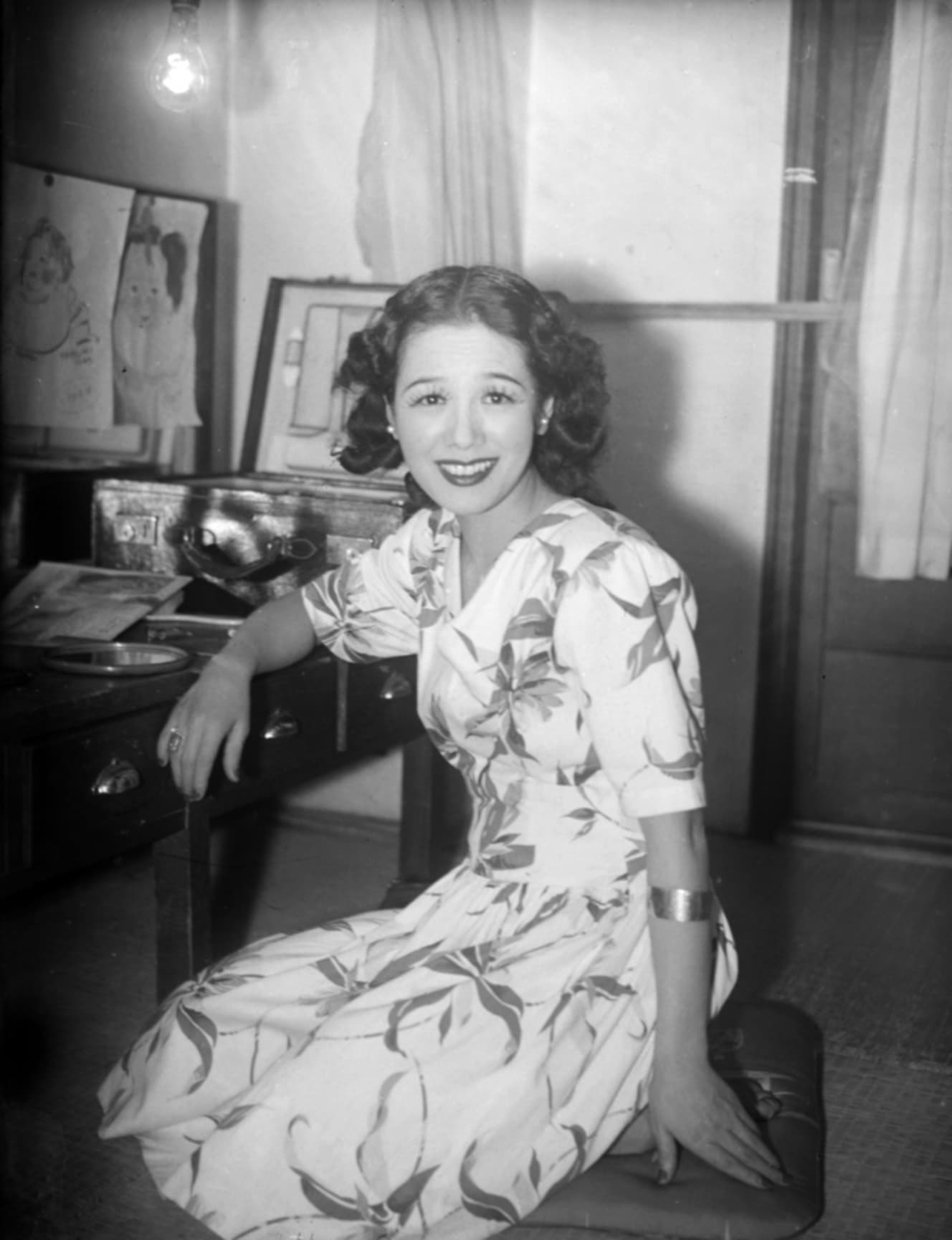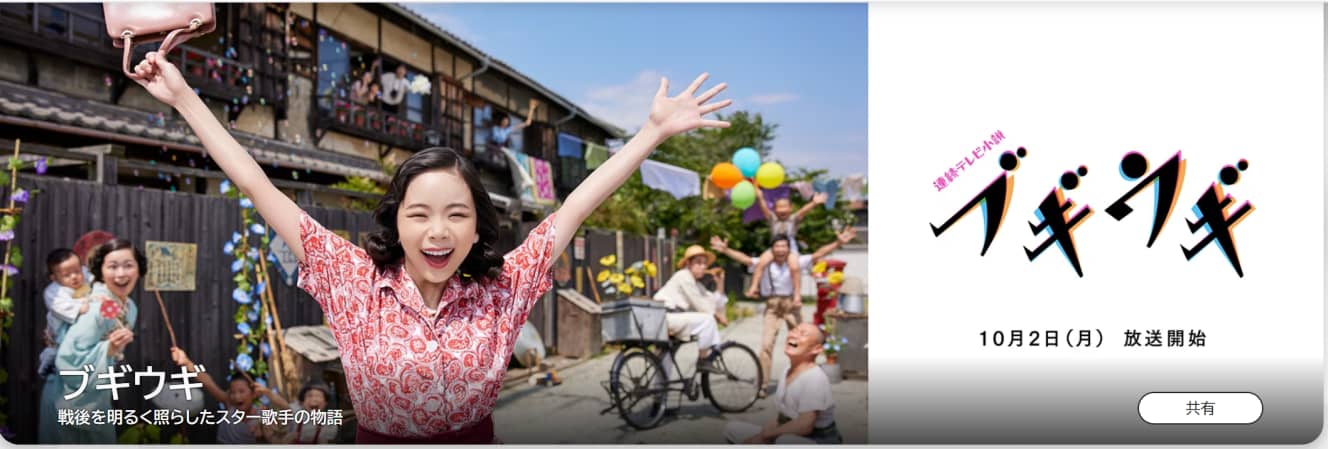Things You Should Know Before the New Morning Drama “Boogie Woogie” Starts!
Before the start of the broadcast, here are some facts you might want to know before watching the series.
NHK’s TV series “Boogie Woogie” is scheduled to start airing on October 2.
The model for the heroine Suzuko, played by Shuri, is singer Shizuko Kasagi. Her series of songs, including her signature song “Tokyo Boogie Woogie,” brightened and encouraged postwar Japan.
You are vaguely familiar with the lyrics and melody of “Tokyo Boogie Woogie”, and you might also recognize the name Shizuko Kasagi. For those who want to enjoy watching “Boogie Woogie” even more, we have compiled a list of things you might enjoy knowing before the broadcast begins.
1_What kind of person is Shizuko?
According to the profile on Nippon Columbia’s website, Shizuko Kasagi was born in Kagawa Prefecture in August 1914.
In 1927, she entered the Osaka Shochiku Gakugeki Club (predecessor of OSK Nippon Opera Company) and made her first stage appearance. Later, under the name “Shizuko Kasagi,” she worked as a jazz singer with composer Ryoichi Hattori, and in 1948, “Tokyo Boogie Woogie” became a big hit, earning her the nickname “Queen of Boogie”
In 1957, she retired from singing after “Tayori Ni Mase,” and changed her stage name to “Kasagi Shizuko” and appeared on stage and in TV dramas. She died in March 1985 at the age of 70.
2_What songs did she sing?
As her name “Queen of Boogie” suggests, she released many boogie/boogie-woogie songs, including “Tokyo Boogie Woogie,” “Shopping Boogie,” “Home Run Boogie,” “Sakura Boogie Woogie,” “Boogie Woogie,” “Boogie Woogie Musume,” “Aloha Boogie,” “Nana Fukujin Boogie,” and many other boogie-related songs, allowing the audience to experience the queen’s title. She also sings many mambo and jazz songs.
3_What is “Boogie Woogie” anyway?
“Boogie-woogie” is a form of piano blues performance originally created by a black American pianist in the 1920s. From there, it developed into “boogie” with guitar, bass, and other instruments.
In Japan, composer Ryoichi Hattori, who had been treated as an enemy of jazz until the end of the war, combined the rhythm of the boogie with the melody of a song and collaborated with Shizuko Kasagi to create a series of songs that gave her the name “Queen of the Boogie”.
4_What was so great about Shizuko Kasagi?
It is said that one of the reasons for the popularity of Shizuko Kasagi was the sheer brightness of her songs and stage performances. Her rhythmic boogie melodies by Ryoichi Hattori, her flamboyant and intense dancing, powerful singing voice, and bright makeup and looks, all of which were developed by the Osaka Shochiku Gakugeki Club, are said to have brightened and encouraged Japan in the postwar period.
She met Ryoichi Hattori before the war when they were both in the Osaka Shochiku Gakugeki Club, and although she was marketed as a jazz singer, her jazz music and her flamboyant makeup and performance were considered problematic, and there was a time when the extent to which she could move on stage was restricted.

5_What is Ryoichi Hattori?
Ryoichi Hattori was a leading composer of songs in Japan during the Showa period.
In addition to a series of songs by Shizuko Kasagi, he has produced many songs that are still familiar today, including “Farewell Blues” (Noriko Awatani), “Blue Mountains” (Ichiro Fujiyama), and “Ginza Kankan Musume” (Hideko Takamine). His eldest son is Katsuhisa Hattori.
In “Boogie Woogie,” a character named “Zenichi Hatori” appears, modeled after Ryoichi and played by Tsuyoshi Kusanagi. It will be interesting to see how they meet and how the establishment of the Japanese boogie woogie will be portrayed.
In addition, Rinko Kikuchi plays Ritsuko Ibarada, who is modeled on Noriko Awatani and will be Suzuko’s lifelong rival.
A series of songs composed by Shizuko Kasagi, Noriko Awatani, and Ryoichi Hattori are currently available on many subscriptions, so use this basic knowledge to familiarize yourself with the songs and dive rhythmically into the world of “Boogie Woogie” drama, which is as bright and colorful as the rhythm and melody of the boogie.
Text by: Satoru Ota
Writer, editor, interviewer. Started writing when he was a student, and currently writes mainly entertainment articles and interviews for websites and magazines.
